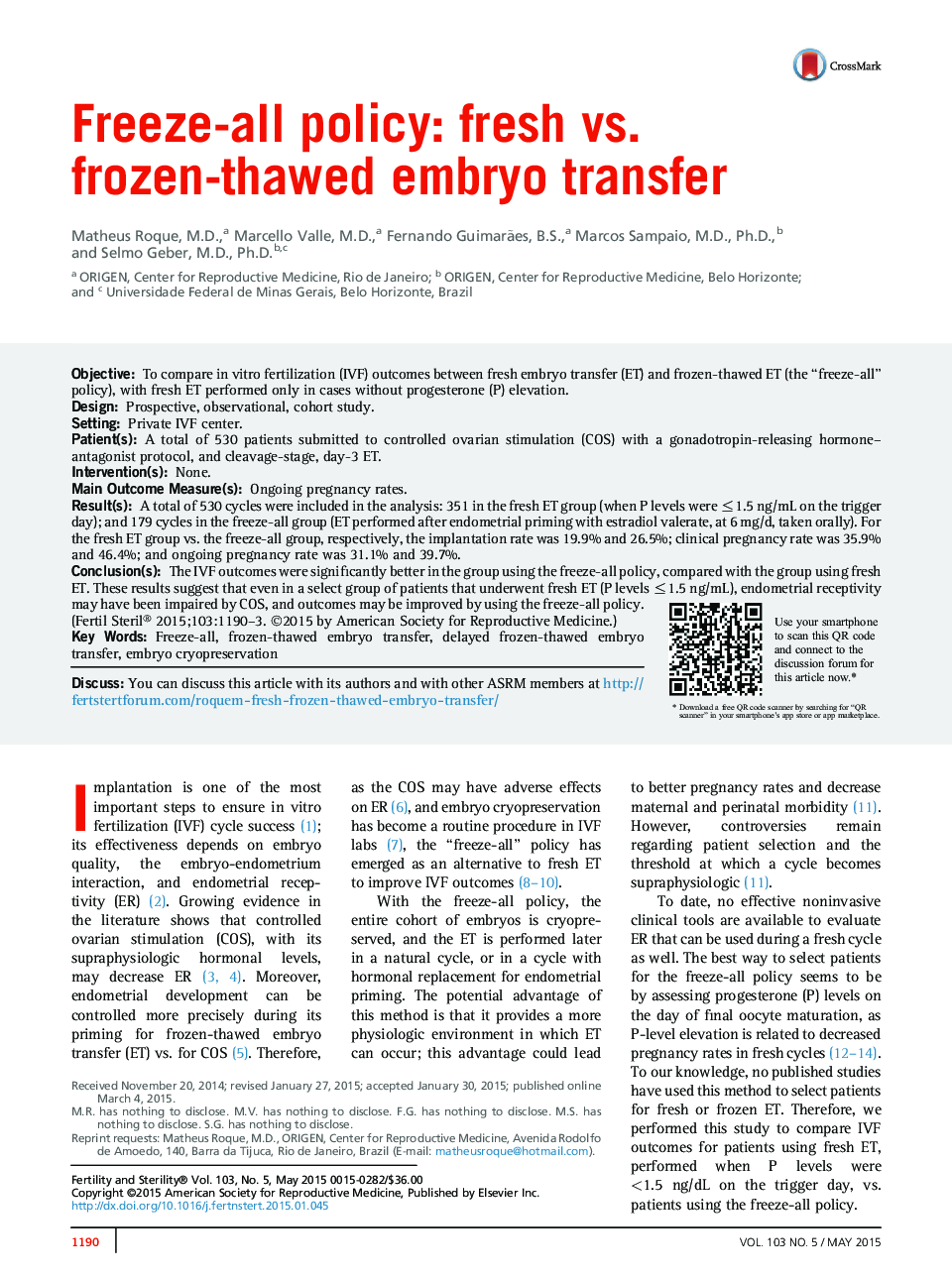| Article ID | Journal | Published Year | Pages | File Type |
|---|---|---|---|---|
| 3930834 | Fertility and Sterility | 2015 | 4 Pages |
ObjectiveTo compare in vitro fertilization (IVF) outcomes between fresh embryo transfer (ET) and frozen-thawed ET (the “freeze-all” policy), with fresh ET performed only in cases without progesterone (P) elevation.DesignProspective, observational, cohort study.SettingPrivate IVF center.Patient(s)A total of 530 patients submitted to controlled ovarian stimulation (COS) with a gonadotropin-releasing hormone–antagonist protocol, and cleavage-stage, day-3 ET.Intervention(s)None.Main Outcome Measure(s)Ongoing pregnancy rates.Result(s)A total of 530 cycles were included in the analysis: 351 in the fresh ET group (when P levels were ≤1.5 ng/mL on the trigger day); and 179 cycles in the freeze-all group (ET performed after endometrial priming with estradiol valerate, at 6 mg/d, taken orally). For the fresh ET group vs. the freeze-all group, respectively, the implantation rate was 19.9% and 26.5%; clinical pregnancy rate was 35.9% and 46.4%; and ongoing pregnancy rate was 31.1% and 39.7%.Conclusion(s)The IVF outcomes were significantly better in the group using the freeze-all policy, compared with the group using fresh ET. These results suggest that even in a select group of patients that underwent fresh ET (P levels ≤1.5 ng/mL), endometrial receptivity may have been impaired by COS, and outcomes may be improved by using the freeze-all policy.
